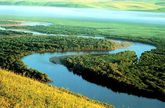Difference between revisions of "ISSS608 2017-18 T3 Assign Shi Chen"
(Created page with "<div style=background:#79D8E9 border:#C4F04E> 165px <b><font size = 6; color="#095C3B"> VAST Challenge 2018: Like a Duck to Water</font></b> </div> <!--M...") |
|||
| (One intermediate revision by the same user not shown) | |||
| Line 1: | Line 1: | ||
<div style=background:#79D8E9 border:#C4F04E> | <div style=background:#79D8E9 border:#C4F04E> | ||
[[Image:Cover1.jpg|165px]] | [[Image:Cover1.jpg|165px]] | ||
| − | <b><font size = 6; color="#095C3B"> VAST Challenge 2018: | + | <b><font size = 6; color="#095C3B"> VAST Challenge 2018: Trying to be an environmental detective </font></b> |
</div> | </div> | ||
<!--MAIN HEADER --> | <!--MAIN HEADER --> | ||
| Line 11: | Line 11: | ||
| style="font-family:Century Gothic; font-size:100%; solid #1B338F; background:#ACDDE5; text-align:center;" width="25%" | | | style="font-family:Century Gothic; font-size:100%; solid #1B338F; background:#ACDDE5; text-align:center;" width="25%" | | ||
; | ; | ||
| − | [[ISSS608_2017-18_T3_Assignment_SHI CHEN_Data_Exploratory|<b><font size="4"><font color="#42485D">Methodology & | + | [[ISSS608_2017-18_T3_Assignment_SHI CHEN_Data_Exploratory|<b><font size="4"><font color="#42485D">Methodology & Data Exploratory</font></font></b>]] |
| style="font-family:Century Gothic; font-size:100%; solid #1B338F; background:#ACDDE5; text-align:center;" width="25%" | | | style="font-family:Century Gothic; font-size:100%; solid #1B338F; background:#ACDDE5; text-align:center;" width="25%" | | ||
| Line 19: | Line 19: | ||
| style="font-family:Century Gothic; font-size:100%; solid #1B338F; background:#ACDDE5; text-align:center;" width="25%" | | | style="font-family:Century Gothic; font-size:100%; solid #1B338F; background:#ACDDE5; text-align:center;" width="25%" | | ||
; | ; | ||
| − | [[ | + | [[Assignments|<b><font size="4"><font color="#42485D">Back to main</font></font></b>]] |
| − | + | | style="font-family:Century Gothic; font-size:100%; solid #1B338F; background:#ACDDE5; text-align:center;" width="25%" | | |
| + | ; | ||
| | | | ||
|} | |} | ||
| Line 27: | Line 28: | ||
<font size="5"><font color="#42485D">'''Current situation'''</font></font> | <font size="5"><font color="#42485D">'''Current situation'''</font></font> | ||
| − | + | According to Kasios, those funny colored satellite images from the Preserve only prove that it is a diverse, changing habitat and that the peculiar images Mitch identified are not conclusive evidence of any wrongdoing. They argue that the other industries should be taking as good care of the area as Kasios corporate and its volunteer squads do year round. To show their goodwill, Kasios reports that they recently donated staff time and money to refurbish ranger stations and campgrounds across the Preserve! Does Kasios have a case here? Perhaps some new visualization of river contaminants and analyses within the Preserve may help illustrate that the new Kasios story doesn't hold water (or does it?).<br/><br/> | |
| + | |||
| + | |||
| + | <font size="5"><font color="#42485D">'''Objective'''</font></font> | ||
| + | |||
| + | To investigate the hydrology data from across the Preserve. You are given a map of the Preserve (with the same base as last year’s challenge), with named sampling sites indicated on the map (the names have local significance, but are just mnemonics for your study) You are also provided with readings from each sampling station over time for several different chemicals and water properties. | ||
| + | |||
| + | |||
| + | <font size="5"><font color="#42485D">'''Reference Question'''</font></font> | ||
| + | |||
| + | <font size="3"><font color="#1C97AB">Question1</font></font>: Characterize the past and most recent situation with respect to chemical contamination in the Boonsong Lekagul waterways. Do you see any trends of possible interest in this investigation? | ||
| + | |||
| + | <font size="3"><font color="#1C97AB">Question2</font></font>: What anomalies do you find in the waterway samples dataset? How do these affect your analysis of potential problems to the environment? Is the Hydrology Department collecting sufficient data to understand the comprehensive situation across the Preserve? What changes would you propose to make in the sampling approach to best understand the situation? | ||
| + | |||
| + | <font size="3"><font color="#1C97AB">Question3</font></font>: After reviewing the data, do any of your findings cause particular concern for the Pipit or other wildlife? Would you suggest any changes in the sampling strategy to better understand the waterways situation in the Preserve? <br/><br/> | ||
Latest revision as of 18:00, 8 July 2018
|
|
|
|
|
|
Current situation
According to Kasios, those funny colored satellite images from the Preserve only prove that it is a diverse, changing habitat and that the peculiar images Mitch identified are not conclusive evidence of any wrongdoing. They argue that the other industries should be taking as good care of the area as Kasios corporate and its volunteer squads do year round. To show their goodwill, Kasios reports that they recently donated staff time and money to refurbish ranger stations and campgrounds across the Preserve! Does Kasios have a case here? Perhaps some new visualization of river contaminants and analyses within the Preserve may help illustrate that the new Kasios story doesn't hold water (or does it?).
Objective
To investigate the hydrology data from across the Preserve. You are given a map of the Preserve (with the same base as last year’s challenge), with named sampling sites indicated on the map (the names have local significance, but are just mnemonics for your study) You are also provided with readings from each sampling station over time for several different chemicals and water properties.
Reference Question
Question1: Characterize the past and most recent situation with respect to chemical contamination in the Boonsong Lekagul waterways. Do you see any trends of possible interest in this investigation?
Question2: What anomalies do you find in the waterway samples dataset? How do these affect your analysis of potential problems to the environment? Is the Hydrology Department collecting sufficient data to understand the comprehensive situation across the Preserve? What changes would you propose to make in the sampling approach to best understand the situation?
Question3: After reviewing the data, do any of your findings cause particular concern for the Pipit or other wildlife? Would you suggest any changes in the sampling strategy to better understand the waterways situation in the Preserve?
